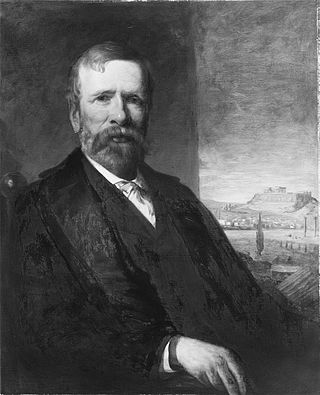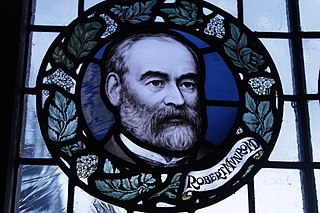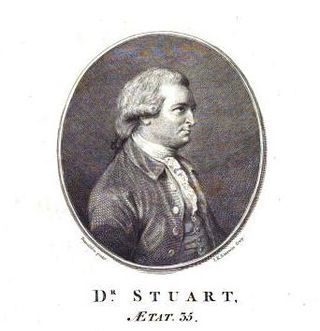
An antiquarian or antiquary is an aficionado or student of antiquities or things of the past. More specifically, the term is used for those who study history with particular attention to ancient artifacts, archaeological and historic sites, or historic archives and manuscripts. The essence of antiquarianism is a focus on the empirical evidence of the past, and is perhaps best encapsulated in the motto adopted by the 18th-century antiquary Sir Richard Colt Hoare, "We speak from facts, not theory."

Stuart Ernest Piggott, was a British archaeologist, best known for his work on prehistoric Wessex.

Alexander Stuart Murray, FBA was a Scottish archaeologist. He was known for excavations on Cyprus.

National Galleries Scotland: Portrait is an art museum on Queen Street, Edinburgh. Portrait holds the national collections of portraits, all of which are of, but not necessarily by, Scots. It also holds the Scottish National Photography Collection.

David Steuart Erskine, 11th Earl of Buchan, styled Lord Cardross between 1747 and 1767, was a Scottish antiquarian, founder of the Society of Antiquaries of Scotland in 1780 and first vice president, and patron of the arts and sciences.

Sir James Balfour Paul was the Lord Lyon King of Arms, the officer responsible for heraldry in Scotland, from 1890 until the end of 1926.

Alexander Henry Rhind was a Scottish antiquarian and archaeologist.

Sir Herbert Eustace Maxwell, 7th Baronet, was a Scottish novelist, essayist, artist, antiquarian, horticulturalist, prominent salmon angler and author of books on angling and Conservative politician who sat in the House of Commons from 1880 to 1906.

Robert Munro FRSE FSA LLD was a Scottish physician and noted amateur archaeologist.
Rhind Lectures are a series of lectures on archaeological topics. They have been hosted by the Society of Antiquaries of Scotland since 1874. The content of the lectures is usually published in journals or expanded into new works by their authors.
John Stuart LLD (1813–1877) was a Scottish genealogist.

Gilbert Stuart (1742–1786) was a Scottish journalist and historian.
David John Breeze, OBE, FSA, FRSE, HonFSAScot, Hon MIFA is a British archaeologist, teacher and scholar of Hadrian's Wall, the Antonine Wall and the Roman army. He studied under Eric Birley and is a member of the so-called "Durham School" of archaeology. He was a close friend and colleague of the late Dr Brian Dobson.
John Romilly Allen FSA FSAScot was a British archaeologist.

Sir George Macdonald was a British archaeologist and numismatist who studied the Antonine Wall.

Audrey Shore Henshall was a British archaeologist known for her work on Scottish chambered cairns, prehistoric pottery and early textiles.
Caroline Rosa Wickham-Jones MA MSocSci FSA HonFSAScot MCIfA(25 April 1955 – 13 January 2022) was a British archaeologist specialising in Stone Age Orkney. She was a lecturer at the University of Aberdeen until her retirement in 2015.
Frederick Coles FSA Scot (1854–1929) was an archaeologist, artist, naturalist and musician. For many years he worked as Assistant Keeper at the National Museum of Antiquities of Scotland in Edinburgh from where he was funded to make a series of annual field archaeology expeditions to survey and draw stone circles in Scotland.

Dr Anna Ritchie OBE, BA, PhD, FSA, Hon FSA Scot is a British archaeologist and historian.

David Christison FRCPE LLD was a Scottish physician, botanist, writer and antiquary. He served as a military doctor during the Crimean War, at which time, owing to illness, he abandoned his medical career. From the 1860s onwards Christison travelled extensively in South America and became a travel writer, publishing an account of his journeys within Paraguay, and other books on topics relating to that country. He also turned to archaeology in which, through his interest in botany, he made advances in the science of dendrochronology. He became a pioneer of systematic field study in archaeological research and was one of the first to carry out an extensive investigation of Scotland's ancient hillforts, writing and publishing extensively on the topic in later life.
















